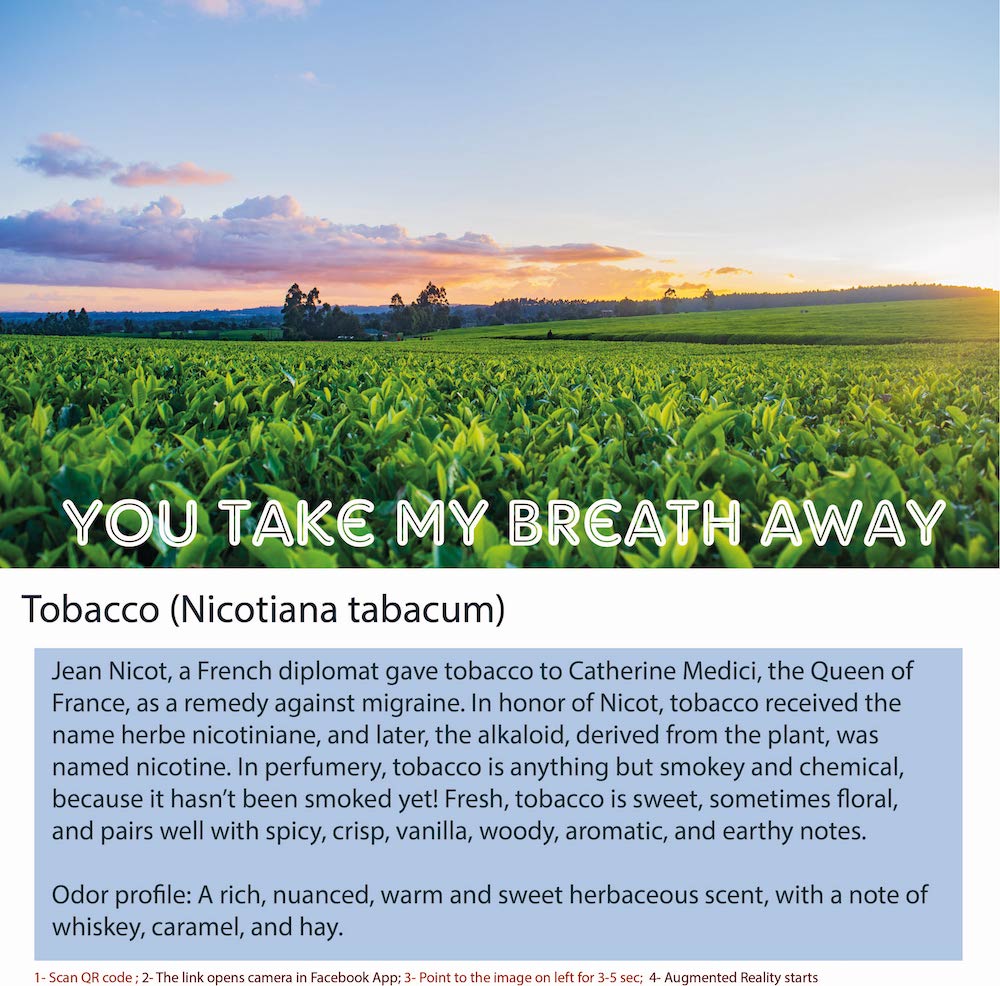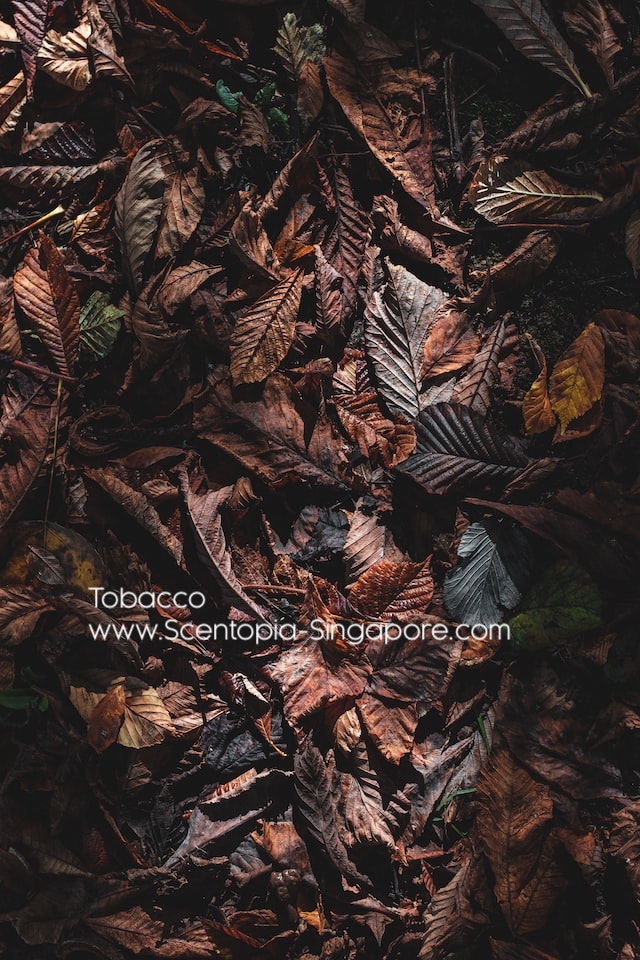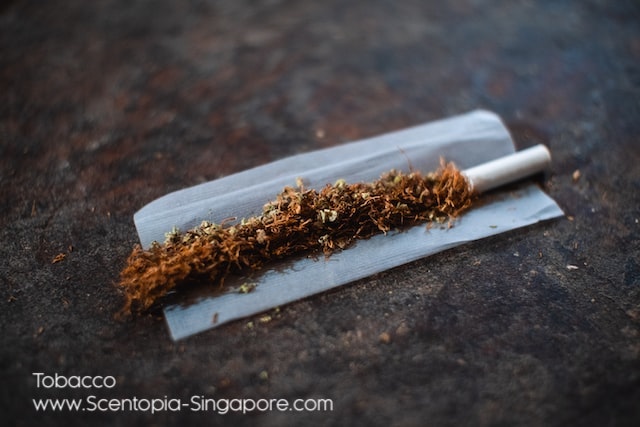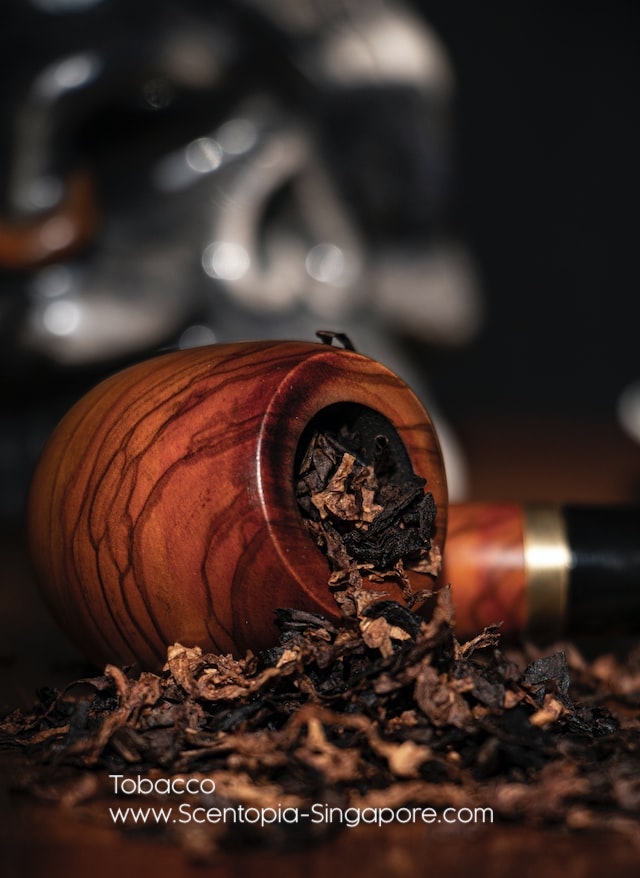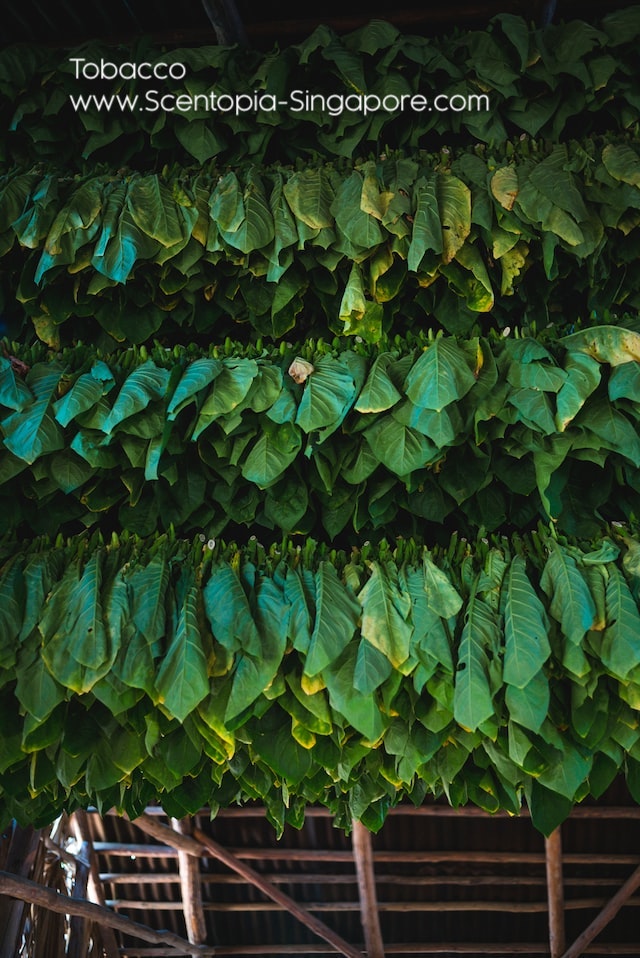Experience the Allure of Oriental Aromas
Tobacco: A Controversial Plant with Diverse Uses and Intriguing Facts
Introduction: Tobacco, with its complex history and diverse applications, is a plant that has sparked both fascination and controversy. Scientifically known as Nicotiana tabacum, tobacco is a member of the Solanaceae family. Native to the Americas, tobacco has been used for various purposes for thousands of years. From inspiring perfumers with its aromatic notes to its use in traditional medicine and culinary applications, tobacco's journey has been marked by both positive and negative associations. This essay delves into the captivating world of tobacco, encompassing its presence in perfumes, therapeutic oils, food, medicinal systems, historical significance, and intriguing fun facts about this controversial plant.
Tobacco in Perfumes and Fragrance: The distinct aroma of tobacco has inspired perfumers to create scents that capture its smoky, warm, and earthy notes. Tobacco-inspired perfumes often evoke feelings of sophistication, sensuality, and nostalgia.
Therapeutic Oils and Traditional Medicine: While tobacco itself is not commonly used in therapeutic oils, some traditional medicine systems have used tobacco leaves in poultices and ointments for certain ailments. However, it is essential to note that the medicinal use of tobacco is highly controversial and potentially harmful.
Culinary Applications and Food: Tobacco is not commonly used in modern culinary applications. However, in some indigenous cultures, tobacco leaves have been used in cooking and as a flavoring agent.
Medicinal Uses and Historical Significance: Tobacco has played a role in traditional medicine practices in some cultures, used to treat various conditions. However, its medicinal use is controversial due to the health risks associated with tobacco consumption.
The History and Social Impact of Tobacco: Tobacco has a rich history that dates back to ancient times when indigenous peoples in the Americas used it for spiritual rituals and medicinal purposes. Its use expanded with European colonization, leading to the widespread cultivation and commercialization of tobacco products.
Health Risks and Controversy: Tobacco use, particularly smoking, is associated with significant health risks, including cancer, respiratory diseases, and cardiovascular problems. This has led to extensive public health campaigns to discourage tobacco use and regulate tobacco products.
Fun and Crazy Facts:
Tobacco, with its complex history and diverse applications, is a plant that has both fascinated and concerned humanity for centuries. From its presence in perfumes to its use in traditional medicine and historical significance, tobacco's journey is marked by both positive and negative associations. While it has played significant roles in various cultures and industries, its health risks and controversy surrounding its use cannot be ignored. As we explore the intriguing world of tobacco, we are reminded of the need for responsible and informed decision-making regarding its consumption and the importance of understanding its cultural significance and potential impact on public health.
Introduction: Tobacco, with its complex history and diverse applications, is a plant that has sparked both fascination and controversy. Scientifically known as Nicotiana tabacum, tobacco is a member of the Solanaceae family. Native to the Americas, tobacco has been used for various purposes for thousands of years. From inspiring perfumers with its aromatic notes to its use in traditional medicine and culinary applications, tobacco's journey has been marked by both positive and negative associations. This essay delves into the captivating world of tobacco, encompassing its presence in perfumes, therapeutic oils, food, medicinal systems, historical significance, and intriguing fun facts about this controversial plant.
Tobacco in Perfumes and Fragrance: The distinct aroma of tobacco has inspired perfumers to create scents that capture its smoky, warm, and earthy notes. Tobacco-inspired perfumes often evoke feelings of sophistication, sensuality, and nostalgia.
Therapeutic Oils and Traditional Medicine: While tobacco itself is not commonly used in therapeutic oils, some traditional medicine systems have used tobacco leaves in poultices and ointments for certain ailments. However, it is essential to note that the medicinal use of tobacco is highly controversial and potentially harmful.
Culinary Applications and Food: Tobacco is not commonly used in modern culinary applications. However, in some indigenous cultures, tobacco leaves have been used in cooking and as a flavoring agent.
Medicinal Uses and Historical Significance: Tobacco has played a role in traditional medicine practices in some cultures, used to treat various conditions. However, its medicinal use is controversial due to the health risks associated with tobacco consumption.
The History and Social Impact of Tobacco: Tobacco has a rich history that dates back to ancient times when indigenous peoples in the Americas used it for spiritual rituals and medicinal purposes. Its use expanded with European colonization, leading to the widespread cultivation and commercialization of tobacco products.
Health Risks and Controversy: Tobacco use, particularly smoking, is associated with significant health risks, including cancer, respiratory diseases, and cardiovascular problems. This has led to extensive public health campaigns to discourage tobacco use and regulate tobacco products.
Fun and Crazy Facts:
- Tobacco and the "New World": Tobacco played a significant role in the Columbian Exchange, as it was one of the first American plants to be introduced to Europe and later spread to other parts of the world.
- Tobacco and the American Colonies: Tobacco cultivation became a vital economic activity in the American colonies, particularly in Virginia and Maryland, where it was a major cash crop.
- Tobacco Advertising: Tobacco companies were known for extensive advertising campaigns, including iconic characters like the "Marlboro Man" and slogans such as "Winston tastes good like a cigarette should."
- Tobacco Taxation: Tobacco has been heavily taxed in many countries as a means of regulating its use and generating revenue for public health initiatives.
- Tobacco in Sacred Ceremonies: Some indigenous cultures continue to use tobacco in sacred ceremonies and rituals as a means of connecting with the spiritual realm.
Tobacco, with its complex history and diverse applications, is a plant that has both fascinated and concerned humanity for centuries. From its presence in perfumes to its use in traditional medicine and historical significance, tobacco's journey is marked by both positive and negative associations. While it has played significant roles in various cultures and industries, its health risks and controversy surrounding its use cannot be ignored. As we explore the intriguing world of tobacco, we are reminded of the need for responsible and informed decision-making regarding its consumption and the importance of understanding its cultural significance and potential impact on public health.
To experience augmented reality, please open the Facebook-app using QR code and point to the image below
Crafted with Sophistication and Excellence
Tobacco is a plant grown for its leaves, which are dried and processed to create products such as cigarettes, cigars, and pipe tobacco. When consumed, tobacco contains nicotine, a highly addictive substance that stimulates the central nervous system.
The tobacco industry has had a significant impact on culture, literature, and art throughout history. In the 19th and early 20th centuries, smoking was often portrayed in art and literature as fashionable and sophisticated. The advent of anti-tobacco campaigns and health concerns led to a shift in attitudes towards tobacco in the latter part of the 20th century, with smoking being depicted as dangerous and unhealthy.
The tobacco industry has also been depicted in literature, with works such as Michael Lewis's "The Big Short" examining the financial aspects of the industry, and books such as "Fast Food Nation" and "The True Story of the Nicotine Conspiracy" exploring the negative health effects of tobacco. In popular culture, the "tobacco wars" have been the subject of movies, TV shows, and music, with the industry's history and impact on society being widely debated.
The tobacco industry has had a significant impact on culture, literature, and art throughout history. In the 19th and early 20th centuries, smoking was often portrayed in art and literature as fashionable and sophisticated. The advent of anti-tobacco campaigns and health concerns led to a shift in attitudes towards tobacco in the latter part of the 20th century, with smoking being depicted as dangerous and unhealthy.
The tobacco industry has also been depicted in literature, with works such as Michael Lewis's "The Big Short" examining the financial aspects of the industry, and books such as "Fast Food Nation" and "The True Story of the Nicotine Conspiracy" exploring the negative health effects of tobacco. In popular culture, the "tobacco wars" have been the subject of movies, TV shows, and music, with the industry's history and impact on society being widely debated.
Tobacco is a cash crop grown for its leaves, which are dried and processed into products such as cigarettes and cigars. The plant is native to the Americas and is now widely cultivated worldwide. Tobacco farming typically involves clearing the land, preparing the soil, planting the seeds, and harvesting the leaves. The leaves are then dried, fermented, and processed into various products. The tobacco industry is highly regulated, and the use of tobacco is a controversial issue due to its negative health effects and environmental impact.
Explore Our Tobacco Fragrance Collection
Tobacco has been used for thousands of years, with evidence of its use dating back to the 9th century in the Americas. The plant was first brought to Europe by Christopher Columbus in the late 15th century and quickly became popular, with smoking and chewing tobacco spreading throughout the continent.
The tobacco trade was a major factor in the colonization of the Americas, and tobacco quickly became one of the world's most valuable cash crops. The tobacco industry grew rapidly in the 19th and 20th centuries, leading to increased health concerns and regulation. Despite these concerns, tobacco remains a major industry today, with millions of people worldwide using tobacco products.
The tobacco trade was a major factor in the colonization of the Americas, and tobacco quickly became one of the world's most valuable cash crops. The tobacco industry grew rapidly in the 19th and 20th centuries, leading to increased health concerns and regulation. Despite these concerns, tobacco remains a major industry today, with millions of people worldwide using tobacco products.
A Journey Through Oriental Aromas
Here are some fun facts about tobacco:
- The scientific name for the tobacco plant is "Nicotiana tabacum," named after Jean Nicot, a French diplomat who introduced the plant to France in the 16th century.
- Tobacco was used for medicinal and spiritual purposes by indigenous peoples in the Americas for thousands of years before the arrival of Europeans.
- The first recorded use of tobacco in Europe was by Sir Walter Raleigh, who is said to have brought the plant back from the Americas in the 16th century.
- Tobacco is one of the world's most widely traded commodities, with millions of tons produced and sold globally each year.
- The iconic Marlboro brand was originally marketed to women as a "Mild as May" cigarette before being repositioned as a men's brand in the 1950s.
- The largest tobacco company in the world is Philip Morris International, which sells products in over 180 countries.
- The addictive nature of nicotine, the primary psychoactive compound in tobacco, has been known since the 19th century.
- In addition to its negative health effects, tobacco farming can also have a significant impact on the environment, with the use of pesticides and the clearing of large areas of land.
Scentopia Singapore: Your Destination for Luxurious Scents
Tobacco is used as a fragrance note in perfumes, particularly in men's scents. The scent of tobacco can be warm, rich, and slightly sweet, with a slightly smoky quality. It is often combined with other notes such as leather, spices, and woods to create a masculine fragrance. The use of tobacco as a fragrance note is intended to evoke memories or associations with the scent of a lit cigar or pipe. Tobacco-scented perfumes are sometimes marketed as "woody" or "oriental" fragrances and are popular among men who enjoy the aroma of tobacco.
Tobacco is a commonly used flavor in a variety of products, including e-cigarettes, vape juices, and food and beverage items. The flavor is intended to taste like the smoke from a lit cigarette or cigar, and it can be achieved using a combination of natural and artificial flavorings. In e-cigarettes, the tobacco flavor is used to help smokers transition from traditional cigarettes to a less harmful alternative. In food and beverage products, the tobacco flavor is often used to add a smoky or savory note to the product, such as in tea blends, desserts, or savory snacks. However, the use of tobacco flavor in food and beverages has been criticized due to the negative health effects associated with tobacco use.
The scent profile of tobacco is composed of a complex mixture of volatile organic compounds (VOCs). Some of the main chemicals responsible for the scent of tobacco include:
Tobacco is a commonly used flavor in a variety of products, including e-cigarettes, vape juices, and food and beverage items. The flavor is intended to taste like the smoke from a lit cigarette or cigar, and it can be achieved using a combination of natural and artificial flavorings. In e-cigarettes, the tobacco flavor is used to help smokers transition from traditional cigarettes to a less harmful alternative. In food and beverage products, the tobacco flavor is often used to add a smoky or savory note to the product, such as in tea blends, desserts, or savory snacks. However, the use of tobacco flavor in food and beverages has been criticized due to the negative health effects associated with tobacco use.
The scent profile of tobacco is composed of a complex mixture of volatile organic compounds (VOCs). Some of the main chemicals responsible for the scent of tobacco include:
- Pyrazines: A family of compounds with a nutty, roasted, and slightly bitter taste.
- Phenols: A family of compounds with a sharp, bitter, and slightly medicinal scent.
- Aromatic aldehydes: A family of compounds with a floral and slightly sweet scent.
- Volatile amines: A family of compounds with a pungent and slightly sour scent.
- Terpenes: A family of compounds with a fresh and slightly herbal scent.
- Nitrogen-containing compounds: A family of compounds with a slightly sweet and slightly bitter scent.
- Sulfur-containing compounds: A family of compounds with a slightly bitter and slightly medicinal scent.
Captivating Tobacco Fragrance
Here is a list of some popular tobacco-scented perfumes:
- Tom Ford Tobacco Vanille
- Le Labo Tobacco Santal
- Jo Malone London Tobacco & Mandarin
- Armani Prive Tobacco Oud
- Diptyque Tam Dao Eau de Toilette
- Dior Leather Oud
- Joop! Homme Wild
- Montale Intense Cafe
- Penhaligon's Sartorial
- Issey Miyake L'Eau d'Issey Pour Homme Intense.
Join Scentopia, Sentosa's latest tourist attraction wonderful orchid scent crafting, fragrance tour, bridal shower or corporate team building which includes perfume making onsite and offsite, beach activities and more. We also serve primary school learning journey, secondary students and pupil on industrial excursions. Know more about our orchids perfume bar or therapeutic orchid scents and other wellness aromas. Conatct Perfume workshop or book a scent crafting session here.

